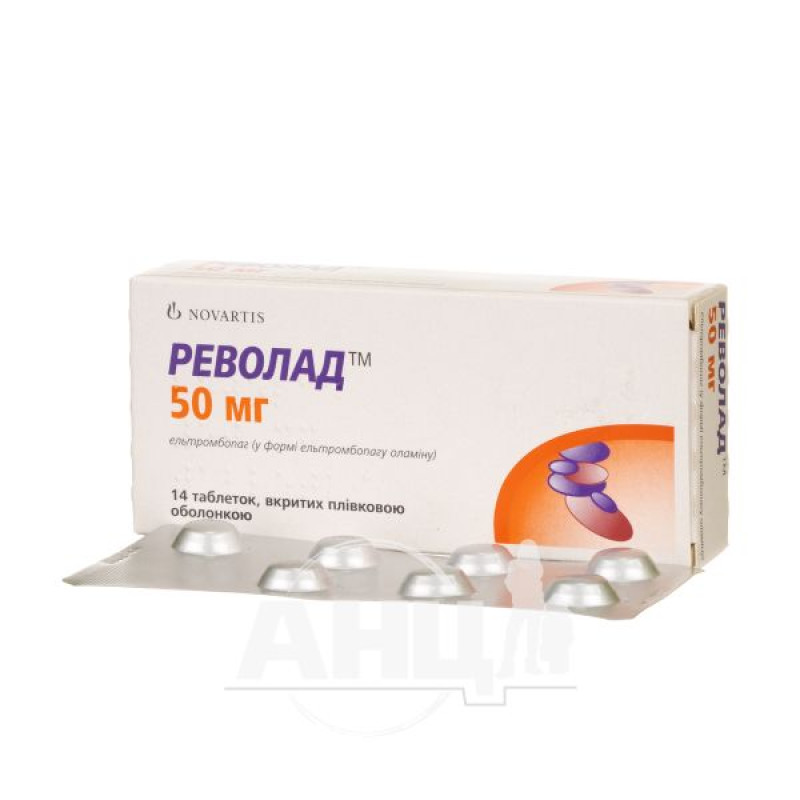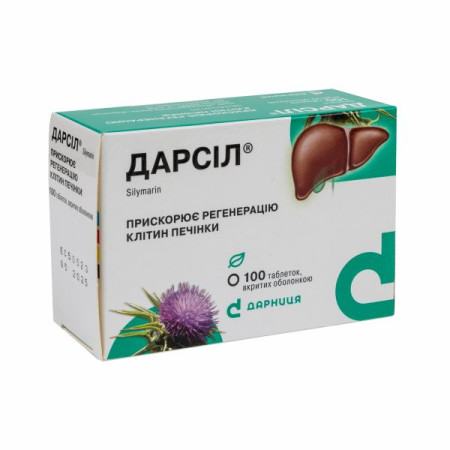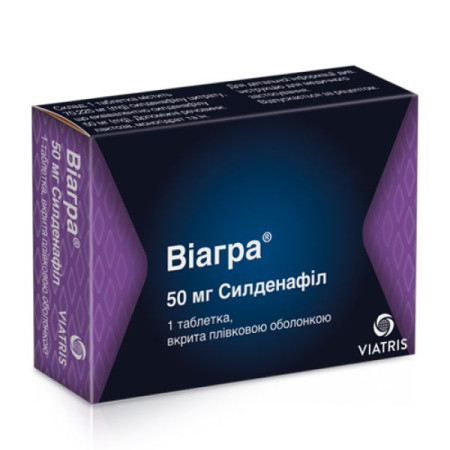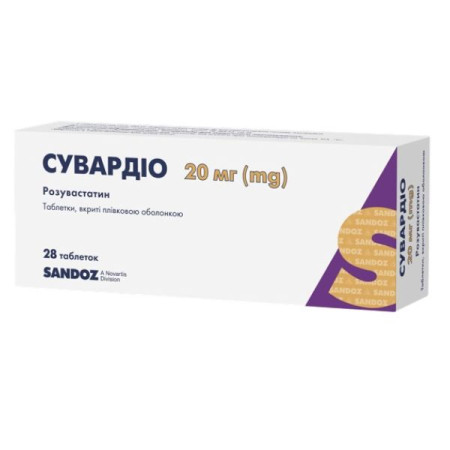Revolade film-coated tablets 50 mg blister No. 14
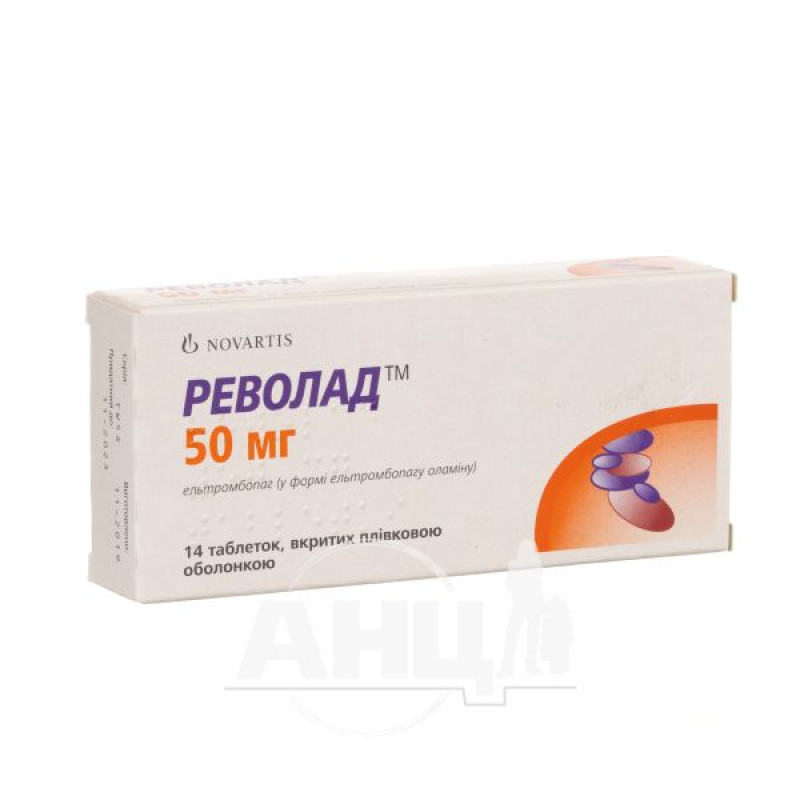
The drug "Revolad" is used in the following cases:
Treatment of patients with chronic immune (idiopathic) thrombocytopenic purpura from one year of age who are not amenable to treatment with other medicinal products (e.g. corticosteroids, immunoglobulins); Treatment of thrombocytopenia in adult patients with chronic viral hepatitis C, if the degree of thrombocytopenia is the main factor preventing the initiation or limiting the possibility of continuing optimal interferon-based therapy; Treatment of adult patients with severe acquired aplastic anemia (TAA) who have not responded to previous immunosuppressive therapy or have responded poorly to previous therapy and are not suitable for hematopoietic stem cell transplantation.Composition
1 tablet contains (active ingredient) 50 mg of eltrombopag (in the form of eltrombopag olamine);
Excipients: magnesium stearate, mannitol (E 421), microcrystalline cellulose, povidone K30, sodium starch glycolate (type A); Opadry Brown 03B26716 shell: hypromellose, titanium dioxide (E 171), macrogol 400, iron oxide yellow (E 172), iron oxide red (E 172).
Contraindication
Hypersensitivity to eltrombopag or any other component of the drug.
Method of administration and doses
Treatment with eltrombopag should be initiated and supervised by a physician experienced in the treatment of hematological diseases or chronic hepatitis C and its complications.
The dosage regimen is individualized and based on the platelet count of each patient. The goal of treatment with eltrombopag is not to normalize the platelet count.
Treatment of patients with chronic idiopathic thrombocytopenic purpura (ITP).
The minimum effective dose of eltrombopag should be used to achieve and maintain a platelet count ≥ 50,000/μL. Dose adjustments are based on platelet count response. Eltrombopag should not be used to normalize platelet counts. In clinical studies, increases in platelet counts were observed within 1 to 2 weeks of initiating eltrombopag therapy and decreases were observed within 1 to 2 weeks of discontinuing eltrombopag therapy.
Adults and children aged 6 to 17 years. The recommended starting dose of eltrombopag is 50 mg once daily. Patients of East Asian descent should be initiated at a reduced dose of 25 mg once daily.
Children aged 1 to 5 years: The recommended starting dose of eltrombopag is 25 mg once daily.
Monitoring and adjusting dosage.
After initiation of treatment with eltrombopag, the dose should be adjusted to achieve and maintain a platelet count ≥ 50,000/μL to reduce the risk of bleeding. The dose should not exceed 75 mg/day.
During treatment with eltrombopag, liver function tests and haematology should be monitored regularly and the eltrombopag dose adjusted based on platelet levels as shown in Table 1. Complete blood counts, including platelet counts and peripheral blood smears, should be performed weekly until platelet levels are stable (≥ 50,000/µL for at least 4 weeks). Thereafter, complete blood counts should be performed monthly.
The lowest effective dose of the drug is used to maintain the required platelet level.
Eltrombopag dose adjustment for patients with ITP (Table 1).
Platelet count | Dose |
< 50,000/μL after at least 2 weeks of therapy | Increase daily dose by 25 mg to a maximum dose of 75 mg per day.* |
≥ 50000/μl and ≤ 150000/μl | Use the lowest effective dose of eltrombopag and/or concomitant ITP medication to maintain platelet levels that prevent or reduce bleeding. |
> 150,000/μl and ≤ 250,000/μl | Reduce daily dose by 25 mg. Wait 2 weeks to assess the effect of this and then adjust the dose accordingly**. |
> 250,000/μl | Discontinue eltrombopag, increase platelet count frequency to 2 times per week. If platelet levels are ≤ 100,000/μL, re-administer eltrombopag at a reduced dose of 25 mg daily. |
* For patients receiving eltrombopag 25 mg every other day, increase dose to 25 mg once daily.
** For patients who will receive eltrombopag 25 mg once daily, resuming treatment at 25 mg every other day should be attempted.
Eltrombopag can be used in addition to other medicinal products for the treatment of ITP. The dose of concomitant medicinal products for the treatment of ITP should be adjusted according to the clinical condition to avoid excessive increases in platelet counts during treatment with eltrombopag.
Before each new dose adjustment, a minimum of 2 weeks should be allowed after the previous dose adjustment to observe the patient's platelet response to treatment.
The standard amount of eltrombopag to increase or decrease the daily dose is 25 mg per day.
Discontinuation of treatment.
The patient should be re-evaluated periodically and the decision to continue treatment should be made on an individual basis. In patients with an intact spleen, splenectomy should be considered. Thrombocytopenia may recur after discontinuation of treatment.
Treatment of thrombocytopenia in adult patients with chronic HCV.
When using eltrombopag in combination with antiviral drugs, the prescribing information for these drugs should be consulted.
In clinical trials, increases in platelet counts were generally observed within 1 week of initiating treatment with eltrombopag. The goal of treatment should be to achieve the minimum platelet count required to initiate antiviral therapy. During antiviral therapy, the goal of treatment should be to maintain platelet counts at a level that prevents bleeding, typically 50,000-75,000/μL. Platelet counts >75,000/μL should be avoided. The lowest effective dose of eltrombopag should be used to achieve and maintain platelet counts necessary to initiate and optimize antiviral therapy. Dose selection is based on platelet recovery.
Initial dose.
The starting dose is 25 mg once daily. No dose adjustment is required for patients of East Asian descent or patients with mild hepatic impairment.
Monitoring and dose adjustment.
The dose of eltrombopag is increased by 25 mg every 2 weeks until the platelet count is optimal for initiation of antiviral therapy. Platelet counts should be monitored weekly before initiating antiviral therapy. Platelet counts may decrease at the start of antiviral therapy, so immediate dose adjustments should not be made (see Table 1).
During antiviral therapy, the dose of eltrombopag should be adjusted to avoid reducing the dose of peginterferon, as a decrease in platelet count increases the risk of bleeding in patients (see Table 2). Platelet counts should be monitored weekly until stable, usually 50,000-75,000/μL. Thereafter, complete blood counts, including platelet count and peripheral blood smear, should be monitored monthly.
A daily dose reduction of 25 mg should be considered if platelet counts exceed the target level. The effect of the new dose should be assessed after 2 weeks and a decision made on further dose adjustment.
Do not exceed a dose of 100 mg per day.
Eltrombopag dose adjustment for patients with chronic hepatitis C during antiviral therapy (Table 2).
Platelet count | Dosage |
< 50,000/μL after at least 2 weeks of therapy | Increase the daily dose by 25 mg, but not more than 100 mg per day. |
≥ 50000/μl and ≤ 100000/μl | The lowest dose of eltrombopag that allows avoiding a reduction in the dose of peginterferon. |
≥ 100,000/μl and ≤ 150,000/μl | Reduce daily dose to 25 mg. After 2 weeks, assess the effect of the new dose and decide on further dose adjustment*. |
> 150,000/μl | Discontinue eltrombopag; increase platelet count monitoring frequency to 2 times per week. Once the platelet count is ≤ 100,000/μL, resume therapy at a daily dose reduced by 25 mg**. |
* At the beginning of antiviral therapy, platelet counts may decrease, so the dose should not be adjusted immediately.
** For patients receiving eltrombopag 25 mg once daily, resuming treatment at 25 mg every other day should be attempted.
Discontinuation of treatment.
If the required platelet count to initiate antiviral therapy has not been achieved after 2 weeks of treatment with eltrombopag 100 mg, eltrombopag should be discontinued.
Eltrombopag therapy should be discontinued if antiviral therapy is discontinued. Excessive platelet levels or severe liver function test abnormalities also require discontinuation of treatment.
Severe aplastic anemia.
Initial dose.
The starting dose of eltrombopag is 50 mg once daily. For patients of East Asian descent, eltrombopag should be initiated at 25 mg once daily. Treatment should not be initiated in patients with established cytogenetic defects of chromosome 7.
Monitoring and dose adjustment.
Hematologic response requires dose titration, usually to 150 mg, and may take up to 16 weeks from the start of eltrombopag. The eltrombopag dose should be adjusted in 50 mg increments every 2 weeks to achieve a target platelet count of ≥ 50,000/μL. For patients taking 25 mg once daily, the dose should be increased to 50 mg/day initially, and then increased by 50 mg increments. The dose of 150 mg/day should not be exceeded. Clinical hematologic and liver function tests should be monitored during eltrombopag therapy and the eltrombopag dose adjusted according to platelet counts as outlined in Table 3.
Eltrombopag dose adjustments in patients with severe aplastic anemia (Table 3).
Platelet count | Dose adjustment or response |
< 50,000/μL after at least 2 weeks of therapy | |
From ≥ 50,000/μL to ≤ 150,000/μL | Use the lowest dose of eltrombopag sufficient to maintain platelet count. |
From > 150,000/μL to ≤ 250,000/μL | Reduce daily dose by 50 mg. Wait two weeks to assess effects and further adjust dose (if necessary). |
> 250,000/μl | Discontinue eltrombopag; for at least one week. When the platelet count reaches ≤ 100,000/μL, resume therapy by reducing the daily dose by 50 mg. |
Gradual dose reduction for patients with a response in three parameters (leukocyte, red blood cell, and platelet levels).
For patients who have achieved a response on three measures, including no need for transfusions, lasting at least 8 weeks: the dose of eltrombopag may be reduced by 50%.
If blood counts remain stable after 8 weeks at a reduced dose, eltrombopag should be discontinued and blood counts monitored. If platelet count falls to < 30,000/μL, hemoglobin to < 9 g/dL, or absolute neutrophil count < 0.5 × 109/L, eltrombopag may be resumed at the previous effective dose.
Discontinuation of treatment.
If no hematologic response is observed after 16 weeks of therapy, eltrombopag should be discontinued. If no new cytogenetic defects are detected, the appropriateness of continuing eltrombopag should be assessed. Eltrombopag should be discontinued if there are excessive changes in platelet counts (as listed in Table 2) or significant deviations from normal values of liver function tests.
Application features
Pregnant women
There are no adequate data from the use of eltrombopag in pregnant women. Animal studies have shown reproductive toxicity. The potential risk to humans is unknown.
Revolad is not recommended for use during pregnancy.
Women of reproductive age/contraception in men and women. Revolade is not recommended for the treatment of women of reproductive age not using contraception.
Breastfeeding. It is not known whether eltrombopag or its metabolites are excreted in human milk. Animal studies have shown that eltrombopag is excreted in human milk, and a risk to the infant cannot be excluded. A decision should be made whether to discontinue breast-feeding or to discontinue Revolade therapy, taking into account the expected benefit of therapy for the mother and the potential risk to the infant.
Fertility: Reproductive function in male and female rats was not affected at doses comparable to human doses of eltrombopag. However, a risk to humans cannot be completely excluded.
Children
Revolade film-coated tablets are not recommended for the treatment of children under 1 year of age with chronic ITP due to insufficient data on the efficacy and safety of the drug.
There are no data on the efficacy and safety of eltrombopag in children and adolescents (< 18 years) with thrombocytopenia associated with chronic HCV or TAA. Data are not available.
Drivers
Eltrombopag has a minor influence on the speed of reactions when driving or operating other mechanisms. The clinical condition of the patient and the adverse reaction profile of eltrombopag, including dizziness and lack of alertness, should be borne in mind when considering the patient's ability to perform tasks that require concentration of attention and speed of psychomotor reactions.
Overdose
Symptoms.
In clinical studies in patients with ITP, one case of overdose was observed when the patient took 5000 mg of eltrombopag. Adverse reactions reported included mild rash, transient bradycardia, fatigue, and increased transaminases. Liver enzyme levels measured between days 2 and 18 after overdose were 1.6 times the upper limit of normal for AST, 3.9 times for ALT, and 2.4 times for total bilirubin. The platelet count was 672,000/μL on day 18 after overdose, with a maximum platelet count of 929,000/μL. All adverse reactions resolved without complications after treatment.
Treatment.
Overdose may result in an excessive increase in platelet count and thrombotic/thromboembolic complications. In case of overdose, oral metal cation-containing preparations such as calcium, aluminum, or magnesium should be administered to chelate eltrombopag and limit its absorption. Platelet levels should be closely monitored. Eltrombopag treatment may be restarted according to the recommendations given (see section 4.2).
Since eltrombopag is not significantly excreted by the kidneys and is highly bound to plasma proteins, hemodialysis will not be an effective method of eliminating eltrombopag.
Adverse reactions
The most serious adverse reactions were hepatotoxicity and thrombotic/thromboembolic complications. The most common adverse reactions occurring in at least 10% of patients included: nausea, diarrhea, and increased alanine aminotransferase.
Thrombocytopenia associated with hepatitis C virus in adult patients.
The most serious adverse reactions identified during studies of ITP or HCV therapy were hepatotoxicity and thrombotic/thromboembolic complications.
The most common adverse reactions (experienced by at least 10% of patients) of any grade in ITP or HCV treatment studies were headache, anemia, decreased appetite, insomnia, cough, nausea, diarrhea, hyperbilirubinemia, alopecia, pruritus, myalgia, hyperthermia, fatigue, influenza-like illness, asthenia, chills, and peripheral edema.
Severe aplastic anemia in adult patients.
The safety of eltrombopag in severe aplastic anemia was evaluated in an uncontrolled, open-label study of 43 patients, in which 11 patients (26%) were treated for > 6 months and 9 patients (21%) were treated for > 1 year. The most serious adverse reactions were febrile neutropenia and sepsis/infection. The most common adverse reactions occurring in at least 10% of patients included: headache, dizziness, insomnia, cough, dyspnea, oropharyngeal pain, rhinorrhea, nausea, diarrhea, abdominal pain, increased transaminases, ecchymosis, arthralgia, muscle spasms, pain in extremity, fatigue, febrile neutropenia, and pyrexia.
Storage conditions
Store below 30 °C. Keep out of the reach of children.
Shelf life - 4 years.
There are no reviews for this product.
There are no reviews for this product, be the first to leave your review.
No questions about this product, be the first and ask your question.






